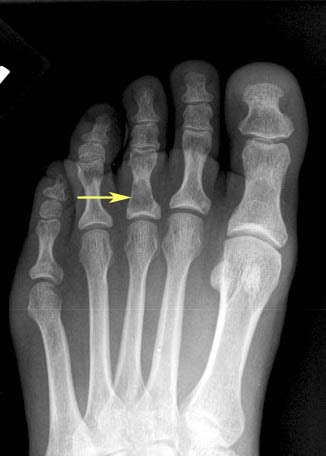
Enchondromas are a type of benign bone tumour that can occur in the small bones of the hands and feet, including the bones of the foot. Enchondromas are most commonly found in the bones of the toes, but can also occur in the bones of the ankle and other parts of the foot.
Enchondromas are often discovered incidentally on X-rays and may not cause any symptoms. However, if the tumour grows large enough, it can cause pain and discomfort, as well as a deformity of the affected bone. In rare cases, an enchondroma can lead to a pathologic fracture, or a fracture that occurs due to weakened bone structure.
Treatment for an enchondroma of the foot depends on the size and location of the tumour, as well as the presence of symptoms. Small, asymptomatic tumours may not require any treatment, but should be monitored with regular X-rays to ensure that they are not growing or causing any complications.
Larger tumours or those that are causing symptoms may require surgical intervention, such as curettage (removal of the tumour) or bone grafting (replacement of the removed bone with healthy bone). In some cases, amputation of the affected toe or foot may be necessary if the tumour is causing extensive damage or is located in a critical area.
It is important to consult with a healthcare provider if you have any symptoms of an enchondroma, such as pain or swelling in the foot, or if you have been diagnosed with an enchondroma on an X-ray. A healthcare provider can help to determine the appropriate course of treatment based on your individual needs and medical history.
